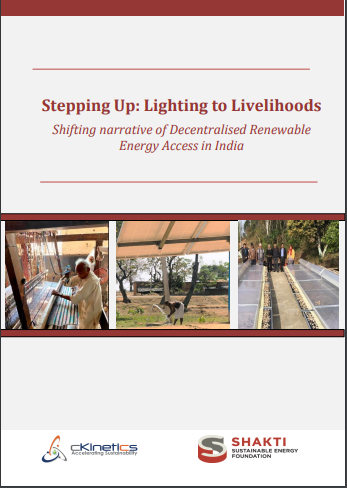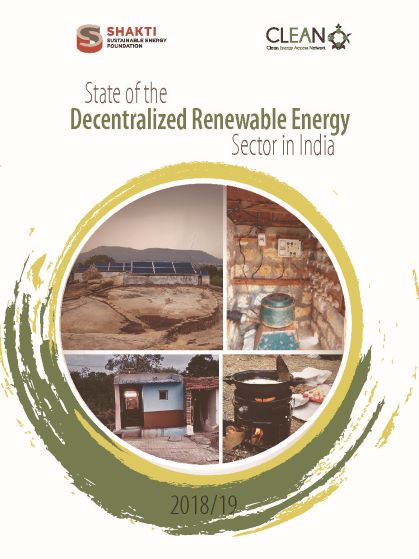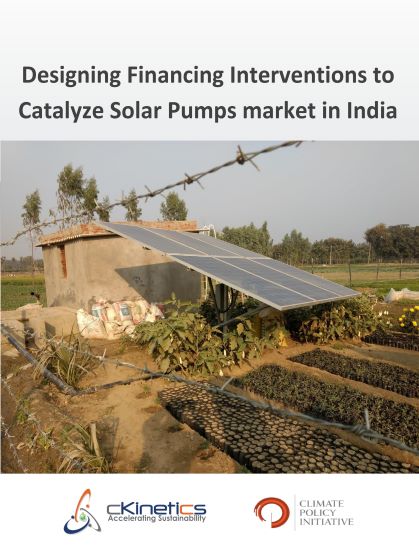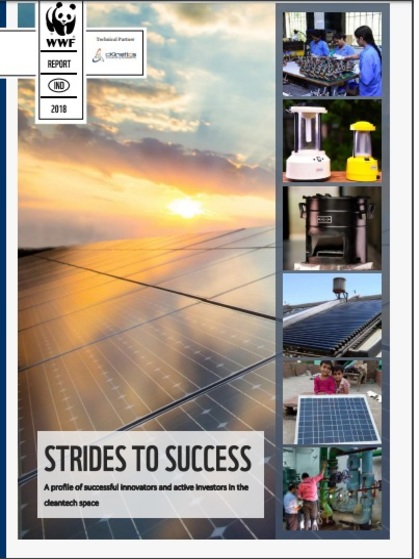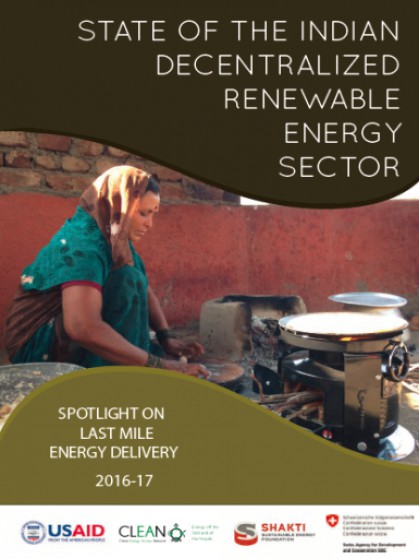Improved Cookstoves are needed, however design and uptake are key to enabling the benefits’
The imperative to provide universal access to reliable and clean energy in India has long been recognized and increasingly pursued, however, one segment that has remained under the shadow is improved cookstoves. As per the SDG India dashboard, only 43.80% of households use clean cooking fuel, indicating that the majority of the households, primarily in rural areas are still dependent on solid fuels for their cooking requirements[1]. The traditional cookstoves typically exhibit very low thermal efficiency of around 15 percent and thus have adverse health impacts on account of the inefficient combustion process. To replace firewood in the kitchen, the government has increasingly been providing free LPG connections to BPL households in the country under the Pradhan Mantri Ujjwala Yojana (PMUY). Given this thrust on LPG, there has been a drop in the share of households reporting the use of free-of-cost biomass (34 percent in 2018, compared to 44 percent in 2015), however, 81 percent of households continue to rely on such biomass for some, if not all, of their cooking needs. Therefore, despite the increase in LPG connections, rural communities continue to rely on traditional cookstoves. This article explores the current state of improved cookstoves in India and the perspective of social practitioners on the ground regarding the same.
The market for Improved Cookstoves
The clean cooking segment covers a gamut of options which includes LPG, PNG, solar cooking, improved cookstoves, etc. To this end, the choice of cooking fuel is dependent on several factors ranging from cost, efficiency, user-friendliness, and also the cooking practices followed in different regions of the country.
Concerning the choice of cooking fuels in rural areas, Dr. Priyadarshini Karve, CEO, Samuchit EnviroTech mentions that the majority of the households engage in ‘fuel stacking’ i.e. use more than one fuel for cooking purposes. In rural areas, this translates into households relying on traditional cookstoves as a secondary source of cooking to LPG. “In areas such as Western Maharashtra, there are households who have an LPG connection since the past 10-11 years, but continue to do some part of cooking on traditional cookstoves due to cultural reasons”, she elaborates.
Under PMUY, Svati Bhogle, MD, SustainTech, states that the penetration of LPG is expected to continue to increase and may even reach 100 percent. However, the affordability and access are likely to remain a barrier for the bottom of the pyramid households. As per CEEW Analysis, the majority of the households spend INR 370 or less per month on cooking fuels. In contrast, even at a subsidized rate, LPG costs around INR 450-500 per cylinder, thus preventing the transition of a household to solely use LPG as cooking fuel[2]. “For most rural households, the usage of LPG isn’t likely to be more than 3-4 cylinders per year. Further, at times, households invariably end up using traditional mud cookstoves more than the LPG cylinders”, she adds.
In recent years, electricity-based cooking is also making inroads into the country, especially in urban areas, however, given the frequent outages and erratic power-supply, it has not witnessed much uptake in rural areas. “Electric induction cooking also requires induction vessels; which increases the investment (~INR 2,000) and there are still certain items for which inductive cookstoves may not be preferred on account of diverse cooking practices. Moreover, if everyone did switch to electric cooking, then the impact or the spike on the grid in early morning or evening will also have to be considered”, Bhogle elaborates. Therefore, there still exists an opportunity for improved cookstoves to replace the back-up or traditional cookstoves which are used alongside LPG. Further, there is a niche market for improved cookstoves for commercial purposes (such as small roadside eateries, snack shops, etc.) which aligns the needs of the target customer and benefits provided by the product.
Harish Anchan, MD, Envirofit-Asia also echoes similar sentiments and highlights that there is a market available for improved cookstoves segment since it addresses the health and quality of life of households at the bottom of the pyramid. In essence, while LPG may find segue into households as an aspirational item, the improved biomass cookstoves are still expected to play a role (to replace traditional cookstoves used along-side LPG) on account of affordability. This is also reflected in the expected trajectory of penetration of cooking options estimated by IESS from 2012 to 2047 (ref. to the graph below).
Awareness and design challenges restricting the deployment
While the role of improved cookstoves in reducing the health impacts cannot be understated, the segment has witnessed a much-needed penetration. There are around roughly 56 percent (~140 million) households who still rely on households on traditional cookstoves for some or all of their cooking requirement[1], however, only 1.5 million improved cookstoves have been sold so far in the country. On the challenges facing the clean cookstoves segment, Neha Juneja of Greenway Appliances shares that there is a significant awareness gap amongst the targeted audience. “It is often difficult and a time-taking process to make households realize of the negative health impacts of the traditional cookstove”, she says. On the policy front, she states that availing subsidies for clean cookstoves segment is an intensive task as the enterprises have the responsibility of identifying the customer, providing the devices and then applying for subsidy after presenting the proof of evidence. Even after that, a certain amount is kept on hold as a performance guarantee.
Another major challenge is that these cookstoves cannot find traction solely on the back of efficiency and emission reduction potential. Households often find easier to continue using traditional cookstoves than make changes in their cooking practices to accommodate clean cookstoves. Further, many times these products perform well in labs, however, they fail to provide requisite results on the ground. Therefore, the clean cookstoves segment has continued to remain a push market due to a lack of requisite awareness and design challenges.
Business operation more skewed towards B2B model than the B2C model
On the business model being followed to address some of these challenges, Harsh Anchan shares about Envirofit’s journey in this space. When the company initially ventured into this segment, it followed the traditional retail distribution (B2C) channel and made efforts to spread awareness directly through marketing and advertising. Currently, however, only five percent of the total revenues are realized from this route. This is primarily because the product requires product awareness and sensitization on the ground.
Envirofit has since evolved into a B2B model wherein through partnerships with NGOs, Microfinance institutions, and CSR Foundations, etc., it has been able to target a wider audience for clean cookstoves. The B2B model has enabled the company to ensure the accessibility of clean cookstoves since organizations such as microfinance institutions have a strong presence in rural areas and are well connected with the targeted users of clean cookstoves. Further, since these institutions already are involved in either product sales or social services in the area of health, energy, livelihood, etc., they are more suited as a channel partner in this segment. Amongst the present channels, the CSR model is soon expected to take over the microfinance model on the back of the carbon credits market (i.e. voluntary emission reductions) being used by large corporates in India.
Emerging market Mechanisms
On the market mechanism front, Carbon credits, which depends on GHG emission reduction, is emerging as an attractive option for upscaling cookstove initiatives. Through the sale of clean cookstoves, Envirofit generated verified emission reduction units for Infosys during 2017-18 and sold the carbon credits to companies such as Infosys, Dalmia Cement, etc. to help offset their emissions.
Neha Juneja, CEO Greenway Appliances, reiterated that carbon funding mechanisms are a useful tool to help stimulate demand as carbon buyers are interested in investing in climate change to offset their emissions. Further, result-based financing mechanisms such as social notes[3] may be a feasible instrument to provide a push to this segment and can be explored as an option to make clean cookstoves more affordable for the consumers.
Conclusion
Essentially, at a broad level, clean cooking involves a mix of option and improved cookstoves will remain to be a part of the basket. As per Dr. Karve, to enable clean cooking practices comprehensively, the preferences of the consumers against different parameters should be mapped and the most suitable option as per an individual should be used. From a user standpoint too, the adoption is higher if consumers' preferences are well understood. According to her, the approach i.e. focus solely on the number of LPG connections is misdirected to a certain extent. Moreover, as LPG consumption increases, India will have to rely more and more on imported LPG, which poses concerns about India’s energy security.
Programs focussed upon clean cooking should be designed to target air quality standards for the rural kitchen. With health as the main driver for this segment, cooking energy device for a household should be based on a scientific methodology which considers how the cooking energy device is being used, affordability of the household, ventilation of the kitchen, etc. “The main focus should be on the usage of clean cooking fuels in the kitchen, either achieved by LPG or through a combination of LPG with clean cookstoves”, she reiterates. Thus, instead of being skewed towards one single solution, there could be a multiplicity of solutions depending on the type of community. While grants and subsidies must be linked with this end-goal but going forward, market-based mechanisms (such as VERs) are expected to provide the thrust needed for the sector.
To this end, in the short term to medium term, improved Cookstoves do have a part to play in meeting the cooking energy needs of rural households. For improved cookstoves, technology development should be the main focus, in order to improve (i) emission performance; (ii) technology resilience and; (iii) cooking convenience, while promoting them with a check on quality Once design is further improved, interventions/support from the government (by way of grants for enabling activities) as also market mechanisms (such as carbon financing) can provide a push to this segment.
___________________________________________________________________________________________________________________
[1] http://www.sdgindia2030.mospi.gov.in/
[3] Social Note is an emerging financial innovation that allows capital to flow into underfunded sectors deemed traditionally too risky or unprofitable for mainstream capital by linking capital flow to actual impact on-ground.
